As peace and quiet are key to an ascetic life, monasteries are often set in scenic and secluded spots, far from the distractions of bustling cities and towns. In the search for solitude, monks founded monasteries in remote and hard to reach regions to encourage spiritual contemplation and introspection. As they were established centuries if not millennia ago, monasteries also boast beautiful architecture and are often home to impressive artworks, manuscripts, and religious treasures. On top of this, they each have rich customs, traditions, and religious practices for visitors to delve into. Whether hidden away among majestic mountains and valleys or set on small secluded islands, these remote monasteries lie amidst some of the most breathtaking landscapes in the world.
17. Dhankar Gompa
Located high in the Himalayas in the far north of India, Dhankar Gompa is set in a spectacular spot atop a rocky spur overlooking the point where the Spiti and Pin Rivers meet. Surrounded by prominent peaks and lunar-like landscapes, the fort monastery lies just above the village of Dhankar, which was once the capital of the Spiti Valley Kingdom. Believed to be over a thousand years old, the monastery’s whitewashed walls are home to some lovely courtyards and ceremonial halls, with its beautiful statue of Vairocana being one of the main highlights. In addition, it boasts phenomenal views over the valley, rivers, and mountains surrounding it.
16. Tatev Monastery
Perched high on the edge of a plateau in the southeast of Armenia, Tatev Monastery looks out imperiously over the deep gorge below. Built during the 9th century, the Armenian Apostolic monastery once ruled over much of the surrounding countryside and accrued great riches and power. This is evident in its fabulous frescoes and exquisite architecture. Sturdy towers, elegant libraries, and large dining halls can be found dotted around the complex’s three divine churches. The important historical, cultural, and religious site can be reached by the Wings of Tatev cable-car which offers unparalleled views over the scenic gorge below.
15. Debre Damo
Located in the north of Ethiopia, not far from the border with Eritrea, Debre Damo is set in a scenic and secluded spot atop a flat-topped mountain. Remarkably, the monastery is only accessible by scaling a 15-meter high cliff by pulling yourself up a rope; this certainly makes for a memorable experience. The complex itself is just as impressive; its awe-inspiring Abuna Aregawi church is thought to be the oldest in the country and dates to the sixth century. Still home to monks, Debre Damo boasts amazing Aksumite architecture, age-old manuscripts, and religious treasures. It is one of the Tigray Region’s most unforgettable sights.
14. Mount Athos
As it is home to not one but 20 monasteries, Mount Athos is one of the most important centers of Eastern Orthodox monasticism. It is found in the northeast of Greece. Often referred to as the ‘Holy Mountain’, the peninsula upon which it lies is only accessible by boat, and only men are permitted to visit its steep, forested slopes and remote monasteries. Since Byzantine times, monks have been living on the peninsula. The Athonite monasteries are all home to impressive artifacts and artworks, with lots of lovely old architecture on show. Visitors to Mount Athos hike between monasteries, take part in religious services and experience the centuries-old monastic way of life.
13. Katskhi Pillar
Rising dramatically above its surroundings, Katskhi Pillar is a natural limestone monolith home to the ruins of an early medieval hermitage. Lying in the west of Georgia, the sheer sides of the rocky outcrop tower to 40 meters. For centuries, its inaccessibility meant that its small church and hermit cells went unvisited. Long seen as a symbol of the True Cross by locals, the pillar’s ruins were finally restored in the early 2000s when a monk moved in. Although the site is closed to the public, Katskhi Pillar makes for a breathtaking sight; its prominent peak is surrounded by lots of wonderful nature and stands out delightfully against the sky.
12. Sümela Monastery
Perched on a narrow ledge halfway up a steep cliff face in northern Turkey, Sumela Monastery lies nestled away in the Pontic Mountains of northern Anatolia looking out over the superb scenery of the Altindere Valley. Founded by two Athenian monks around the year 386AD, the sprawling complex is home to several chapels, a sacred spring, and lots of monks’ cells. It is dedicated to the Virgin Mary. The undoubted highlight, however, is its incredible rock-hewn church coated in colorful, centuries-old frescoes. Only accessible by hiking up lots of long and winding stone steps, Sumela Monastery is a very important and impressive historical and cultural site that is protected and preserved by the Turkish government as a museum.
11. St. George Monastery
Surrounded by the sparkling waters of the Bay of Kotor in Montenegro, St. George Monastery lies on the islet of Ostrvo Sveti Dorde, just off the coast of Perast. Founded in the 12th century, the Benedictine monastery is home to a small church and priory, as well as lots of lovely cypress trees. As it has been uninhabited for centuries and was long used as a cemetery, it has earnt the eerie nickname of the island of the dead. Although tourists are not allowed to visit, St. George Monastery makes for a fine sight when taking a boat trip around the Bay of Kotor - one of Montenegro’s most beautiful natural attractions.
10. Hanging Monastery
Built into the side of a sheer cliff, the Hanging Monastery appears to almost miraculously be suspended in midair, some 30 meters above ground. Located in Shanxi Province, the temple is noted for being the only one in China to combine elements of its three traditional religions of Buddhism, Taoism and Confucianism. Built more than 1,500 years ago, the monastery is an engineering marvel and boasts more than 40 halls and pavilions, with fine artworks, sculptures, and architecture scattered throughout. Protected from the elements in a small canyon basin, the Hanging Monastery looks out over a gorgeous gorge, with Mount Heng to be spied in the distance.
9. Phugtal Gompa
Lying nestled away in Lungnak Valley in the Himalayas, Phugtal Gompa in northern India is one of the most remote monasteries on Earth. Overlooking the turquoise waters of the Lungnak River, its sprawl of buildings are perched on the side of a cliff in the contested Ladakh region of Kashmir, only accessible by foot. Built around a natural cave, the Buddhist monastery was founded approximately six hundred years ago, although it attracted countless sages, scholars and monks long before that. While the monastery and its dramatic setting look a treat, its centuries-old customs and traditions live on: it is still home to a monastic school and holds religious festivals throughout the year.
8. Kozheozersky Monastery
Located in the northwest of Russia, Kozheozersky Monastery is set on a small, scenic peninsula jutting out into Lake Kozhozero. Due to its remote setting, the only way to reach the monastery is to hike for 30 kilometers through the wilderness until you see its white walls rising before you. Since being founded during the 1550s, the monastery has been burnt down and rebuilt, used as a place for political exile, and even as an army base during the Russian Civil War. Nowadays, it is inhabited by one solitary hegumen, who tends to the building and welcomes the rare visitor who makes it to the monastery.
7. Ostrog Monastery
An important and popular pilgrimage site, Ostrog Monastery lies at the top of a steep and winding road in the center of Montenegro. Chiselled into the cliff face of the large Ostroska Greda rock, the monastery was founded by Vasilije in the 17th century and is part of the Serbian Orthodox Church. As its fantastic fresco-coated cave-church houses Saint Basil of Ostrog’s relics, lots of Orthodox, Catholic and Muslim pilgrims pray here in the hope that their ailments will be healed. Besides the wonderful artworks and architecture, Ostrog Monastery also boasts beautiful views out over the Bjeloplavlici plain.
6. Saint Catherine’s Monastery
Lying at the foot of Mount Willow, Saint Catherine’s Monastery is located in the arid and desolate confines of Egypt‘s Sinai Peninsula, not far from the small town of the same name. Home to a fine old church and mosque, as well as a centuries-old library, the fortified complex boasts lots of superb icons, mosaics, and manuscripts. One of the oldest monasteries in the world, Saint Catherine’s was founded all the way back in the year 324 and is still an important pilgrimage site for Christians, Muslims, and Jews. Many people combine it with a visit to the nearby Mount Sinai, which is where Moses is said to have received the Ten Commandments.
5. Key Monastery
Set in the scenic and secluded Spiti Valley of Himachal Pradesh, Key Monastery lies in the very north of India, high up in the Himalayas. Perched atop a hill at an altitude of 4,166 meters, the Tibetan Buddhist monastery boasts commanding views over the sweeping valleys and towering mountains around it. Believed to have been founded in the 11th century, its whitewashed buildings exhibit lots of fantastic architecture, ancient murals, and colorful wall paintings. Still in use to this day, Key Monastery is an important training center for Lamas, with many monks residing here throughout the year.
4. St. George Monastery
Located in the West Bank, St. George Monastery lies between Jerusalem and Amman in the delightfully desolate valley of Wadi Qelt. Established in the 420s, the complex is built into the side of a cliff and is only accessible by hiking down a steep trail and over the pedestrian bridge spanning the gorge. Still inhabited by Greek Orthodox monks, the monastery is home to a number of important relics, as well as ancient chapels and churches. A very popular place of pilgrimage, St. George Monastery makes for an impressive sight, with the arid and rocky scenery of Wadi Qelt all around it.
3. Tiger’s Nest
Perched precariously on a cliff-side some 900 meters above the floor of the Paro Valley, the Tiger’s Nest is one of Bhutan‘s most sacred and spectacular sites. Made up of four main temples, it was founded in 1692 around the cave where an important Buddhist master is said to have meditated. Besides the lovely architecture on show, the monastery is home to countless meditation caves, statues, sculptures and paintings. A marvelous place to visit, the complex can only be reached by climbing up stone steps and paths cut into the cliff face, and by navigating the small rickety wooden bridges that lie between them. From Paro Taktsang you can enjoy incredible views over the valley and forest below, as well as learn more about Bhutan’s rich Buddhist history, culture, and heritage.
2. Taung Kalat
Set atop of a long-extinct volcano, Taung Kalat boasts astounding views over Myanmar‘s Mandalay Region and is a very popular pilgrimage site. Built during the 19th century, the temple is home to lots of gold stupas. The mount which it is perched upon is widely believed to be inhabited by dozens of nats – spirits that are worshiped in Myanmar. To reach the top of Mount Popa, visitors and pilgrims clamber barefoot up 777 steps, avoiding the mischievous macaques lining the route.
1. Meteora
Only second in terms of importance to Mount Athos, the complex of Eastern Orthodox monasteries that make up Meteora are one of Greece’s most famous and photogenic sights. Built on top of huge rock columns that rise precipitously from the floor, the 14th-century monasteries overlook the Plain of Thessaly from their prominent vantage points. Although they once numbered 24 in total, Meteora still has six functioning monasteries that are home to chapels, churches, and caves, as well as fabulous frescoes and ancient religious treasures. To visit the majestic monasteries of Meteora, visitors must hike up endless flights of stone steps cut into the rock. These narrow paths offer breathtaking views of the lovely landscapes below.

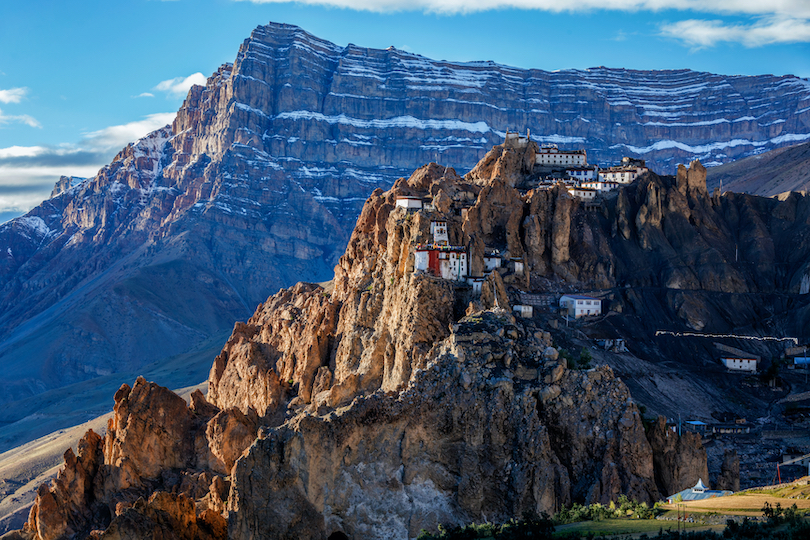
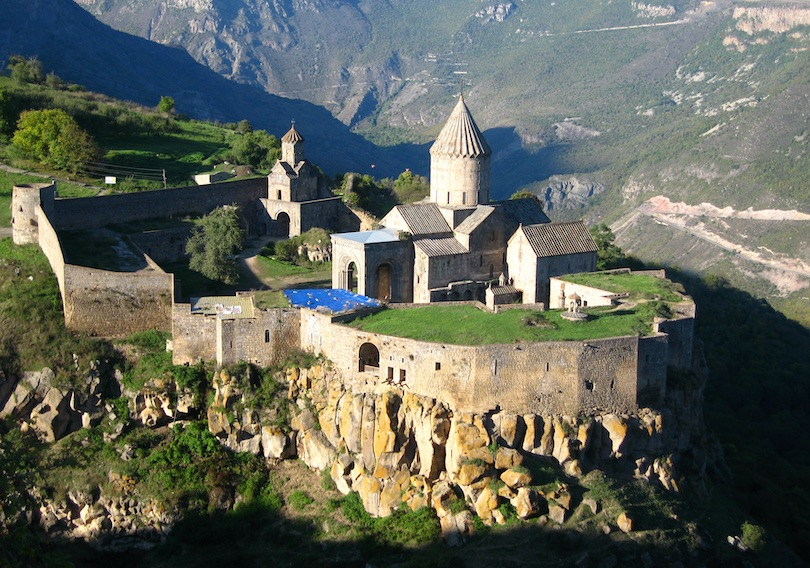
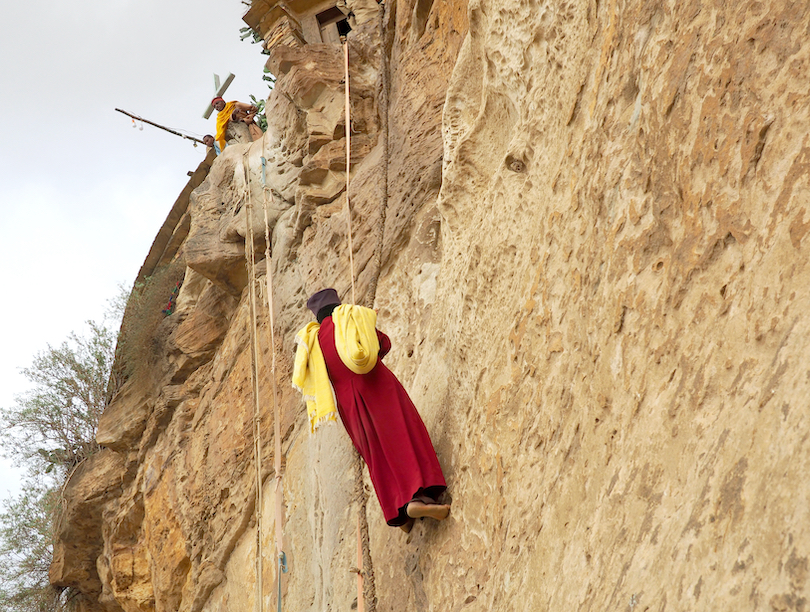








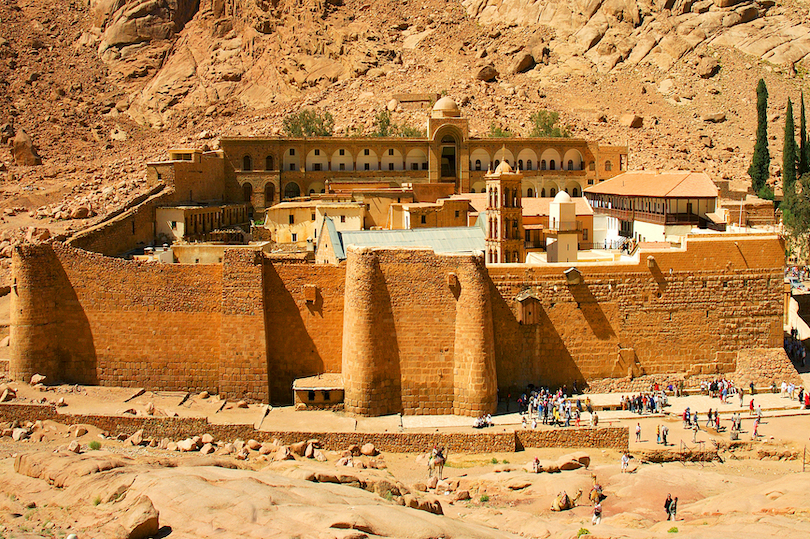



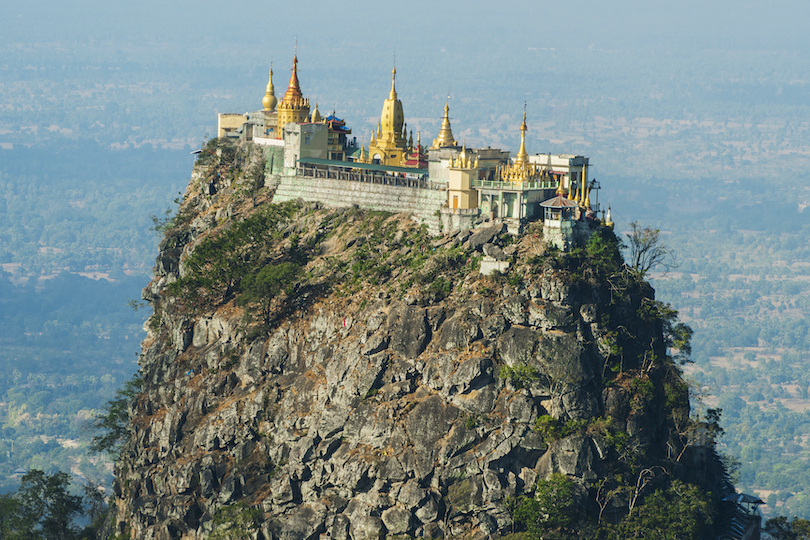
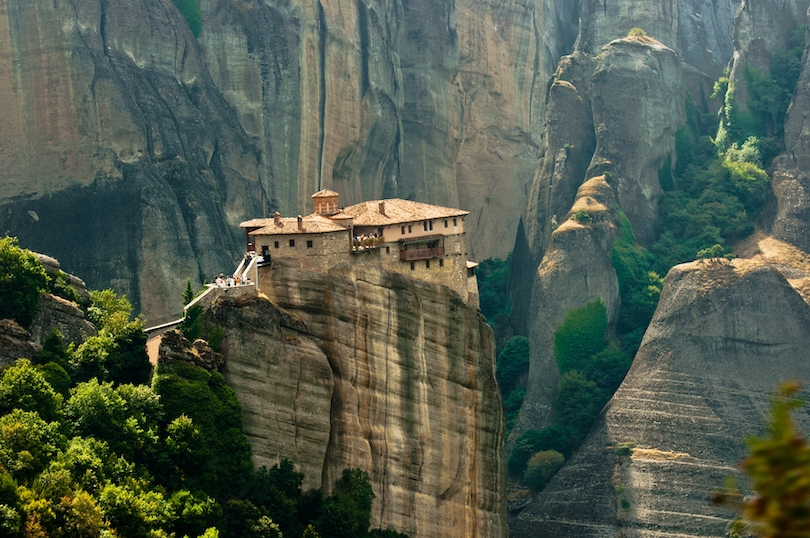
No comments:
Post a Comment